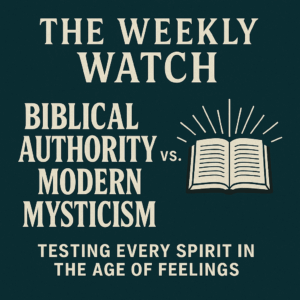⏱️ Estimated Reading Time: 8 min read
Most good stories have at least three parts. First, a happy beginning, then a section that threatens that happiness in some way, and finally, a resolution of the threat and a happy ending. The Bible is God’s story. It begins with the creation of a delightful paradise. “And God saw everything that he had made and behold it was very good…So God blessed the seventh day and made it holy” (Genesis 1:31, 2:3). But tragically, God’s story has a second phase. Adam sinned (Genesis 3:1-7). His sin plunged humanity and all creation into a vortex of pain, alienation from God, death, and relational conflict.
Centuries later, the third phase began—a move towards a happy ending. The point of this article is that the third phase will not be complete until Christ returns. Christ’s Second Coming is the culmination of God’s salvific work. Without it there is no ultimate salvation.
Forty days after his resurrection, Christ ascended into Heaven and sat down at the Father’s right hand:
“Men of Galilee, why do you stand looking into heaven? This Jesus, who was taken up from you into heaven, will come in the same way as you saw him go into heaven” (Acts 1:11).
So, why is Christ’s return necessary for the restoration of God’s story, and what does it have to do with our salvation?
God’s Plan
God’s story begins with the creation of man on the sixth day. God gave Adam and Eve these marching orders:
“Then God said, “Let us make man in our image, after our likeness. And let them have dominion over the fish of the sea and over the birds of the heavens and over the livestock and over all the earth and over every creeping thing that creeps on the earth.” So God created man in his own image, in the image of God he created him; male and female he created them. And God blessed them. And God said to them, “Be fruitful and multiply and fill the earth and subdue it” (Genesis 1:26–28).
This text tells us that God created Adam and Eve with several goals in mind. First, He created them in His image and likeness. This means God created Adam and Eve to be holy as God is holy. The image and likeness are moral. Another term for God’s moral perfections is His glory.
So, God created Adam and Eve to image forth the beauty of His moral glory. This was for their happiness and God’s delight. Then, God commanded the happy couple to be fruitful, multiply, and fill the earth. Ultimately this would mean billions of descendants filling the earth with God’s image and likeness—i.e., God’s moral glory.
Second, He created them to exercise dominion. Adam would rule like God, as a servant ruler. It would be creation’s happiness and well-being—if necessary, even at his expense.
Third, God created Adam and Eve immortal promising that if they abstained from the Tree of the Knowledge of Good and Evil, and ate of the Tree of Life, they would never die.
Sin
As we all know, Adam and Eve transgressed God’s command in Genesis 3. The immediate result was the dissolution of God’s original goals for humanity. First, sin dealt a serious blow to God’s image and likeness. Theologians call this Original Sin. Sin seriously defaced and corrupted the “image and likeness”, which God created Adam to display. Adam would now be fruitful and multiply, but his progeny would reflect a corrupted version of his image and likeness—one in which God could take little pleasure.
Second, God’s dominion passed to the Serpent, who is now the “Prince of this World” (Ephesians 2:2). Influenced by the Serpent Adam’s dominion would now be Adam’s fulfillment at the expense of those he ruled. He would enhance himself by oppressing and using others.
Third, with sin also came death—first spiritual, then physical—and the death was not just for Adam, but to all of God’s creation under His dominion.
Second Adam
Therefore, Christ must return. He returns to eradicate the effects of sin and restore all that God initially intended for humanity:
“Christ…will appear a second time, not to deal with sin but to save those who are eagerly waiting for him” (Hebrews 9:28).
Christ’s salvation is comprehensive. One of Christ’s titles is the “Second Adam.” This concept appears in 1 Corinthians 15:47, Romans 5:15-21, as well as other places. The idea is that Jesus, as a true human being, is a Second Adam coming to repair the damage done by the first Adam. Because Christ is also fully God, the repair work is guaranteed. He will return to consummate the three goals we extracted from Genesis 1:26-28. In the words of Peter, He comes to restore “all things” as predicted by the prophets (Acts 3:21).
Image and Likeness
First, the Second Adam returns to fill the earth with a repaired and perfected image and likeness. Jesus is “the image of the invisible God” that Adam’s sin forfeited (Colossians 1:15). Most importantly, the cross is a graphic picture of what the image and likeness look like in action. Jesus went to the cross in perfect obedience, simultaneously expressing holiness, righteousness, justice, love, wisdom, mercy, grace, and sovereignty—all aspects of the “image and likeness” God created Adam to exercise.
New Birth begins the restoration; sanctification continues it: “Beholding the glory of the Lord we are being transformed into the same image from one degree of glory to another” (2 Corinthians 3:18).
The restoration is only completed when Christ appears. Then, “We will be like him for we will see his as he is” (1 John 3:2).
Scripture implies that when sufficient numbers have been converted to “fill the earth”, Christ will return, raise the dead, and fill a “new earth” with His perfected “image and likeness”, billions of Believers made perfect:
“After this I looked, and behold, a great multitude that no one could number, from every nation, from all tribes and peoples and languages, standing before the throne and before the Lamb, clothed in white robes, with palm branches in their hands” (Revelation 7:9).
Dominion
Second, Christ (the Second Adam) will return to restore the dominion forfeited by the first Adam. After His death and resurrection, Jesus ascended to the Father’s right hand to receive all power and authority (dominion). He now governs the nations and history towards its final redemptive end.
He will return in glory to restore God’s kingdom (dominion) on Earth, abolishing all sin and resistance to His rule, establishing His gracious authority for the joy of His saints:
“Then the seventh angel blew his trumpet, and there were loud voices in heaven, saying, “The kingdom of the world has become the kingdom of our Lord and of his Christ, and he shall reign forever and ever” (Revelation 11:15).
This is the goal of history, and Christ’s return will consummate it.
Immortality
Third, the Second Adam’s return will restore immortality. Death is God’s enemy, and the last enemy to be destroyed will be Death. That will happen at Christ’s return when He raises the dead:
“But our citizenship is in heaven, and from it we await a Savior, the Lord Jesus Christ, who will transform our lowly body to be like his glorious body, by the power that enables him even to subject all things to himself” (Philippians 3:20–21).
Christ will also return to judge the living and the dead, but since this is not part of Genesis 1-3, that is a topic for another time.
Conclusion
If all of this is true, how should we respond? Dr. Wayne Grudem says it this way:
“No matter what their differences on the details, all Christians who take the Bible as their final authority agree that the final and ultimate result of Christ’s return will be the judgment of unbelievers and the final reward of believers, and believers will live with Christ in a new heaven and a new earth for all eternity. God the Father, Son, and Holy Spirit will reign and will be worshiped in a never-ending kingdom with no more sin or sorrow or suffering.”[i]
This is one reason Christ’s return is so important to Believers. Without it there is no salvation. Without it God’s story has an unhappy ending. And deep in our hearts, every human being knows this is wrong. God’s story would not be God’s story without a happy ending. “He who testifies to these things says, “Surely I am coming soon.” Amen. Come, Lord Jesus!” (Revelation 22:20).
[i] Grudem, Wayne. Systematic Theology, Second Edition (p. 1347). Zondervan Academic. Kindle Edition.
William P. Farley is a retired pastor and church planter. He has been married to his best friend, Judy, since 1971. They have five children and 22 grandchildren. Bill is the author of seven books, including Gospel-Powered Humility (P&R), Gospel-Powered Parenting (P&R), and Marriage in Paradise (Pinnacle), Secret to Spiritual Joy (Cruciform), Outrageous Mercy (P&R), and Hidden In the Gospel (P&R). He blogs regularly at www.Williampfarley.com.




